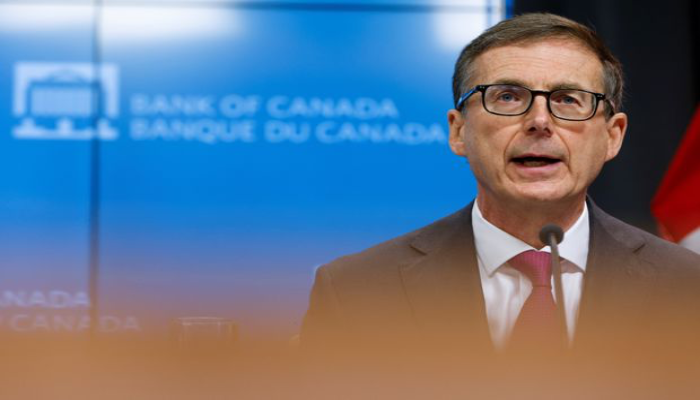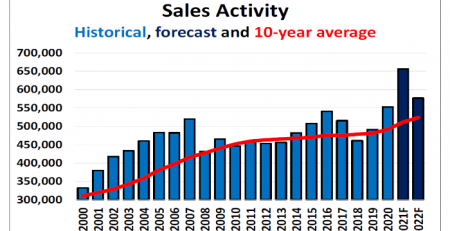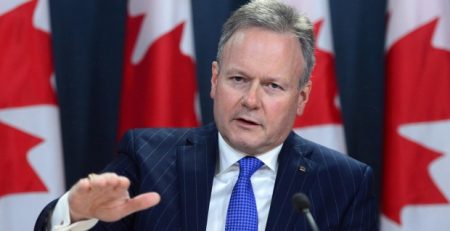Bank of Canada stands pat in year’s final rate decision, balancing COVID-19 risks with vaccine optimism
[Globe and Mail – December 9, 2020]
The Bank of Canada stood pat on monetary policy in its final scheduled interest-rate decision of an eventful 2020, balancing the near-term economic risks from the second wave of the COVID-19 virus with the arrival of vaccines to alleviate the pandemic.
The central bank announced Wednesday morning that its governing council had opted to leave the bank’s key policy rate unchanged at a record-low 0.25 per cent, where it has sat since a series of rate cuts in March in response to the COVID-19 pandemic. It also made no changes to its quantitative easing (QE) program, under which it has committed to buying at least $4-billion a week of Canadian government bonds, after having reduced the program from $5-billion a week in its previous policy decision in late October.
In the brief statement accompanying its decision, the central bank continued to signal that it intends to hold its key rate steady “until economic slack is absorbed so that the [bank’s] 2 per cent inflation target is sustainably achieved” – and reiterated that it doesn’t expect that to happen “until into 2023.” It also reaffirmed that it will continue the QE program “until the recovery is well underway,” as a means to keep interest rates low “across the yield curve.”
It added that it “will adjust [the QE program] as required to help bring inflation back to target on a sustainable basis” – keeping the door open for further fine-tuning of the purchase amounts as the pandemic and the economic recovery progress.
The bank said its economic outlook remains largely in line with its October forecasts, in which it projected that Canada’s real gross domestic product would shrink by 5.7 per cent this year, before rebounding by 4.3 per cent in 2021. It said that in the near term, “new waves of infections are expected to set back [economic] recoveries in many parts of the world,” including Canada.
In Canada, it said, “Economic momentum heading into the fourth quarter appears to be stronger than was expected in October but, in recent weeks, record high cases of COVID-19 in many parts of Canada are forcing re-imposition of restrictions. This can be expected to weigh on growth in the first quarter of 2021, and contribute to a choppy trajectory until a vaccine is widely available.”
However, “news on the development of effective vaccines is providing reassurance that the pandemic will end and more normal activities will resume, although the pace and breadth of the global rollout of vaccinations remain uncertain,” it said.
It added that the federal government’s pledges in last week’s fall economic statement to maintain COVID-19 support programs and to provide additional stimulus spending “should help maintain business and household incomes during this second wave of the pandemic, and support the recovery.”
The Bank of Canada’s decision to hold the line on its interest rate and QE program was no surprise, as economists had expected the central bank to take a wait-and-see approach to both the short-term impact of second-wave containment measures, and the fast-evolving outlook for the rollout of vaccines both in Canada and abroad. The bank has also shown a historical aversion to making rate changes just before the holidays; in the 20 years since it instituted a system of making rate announcements on eight fixed dates throughout the year, it has only made a December rate change three times, most recently in the 2008 financial crisis; it has made eight January rate changes.
Economists said the Bank of Canada will have at least a bit more clarity by its next rate decision and quarterly economic outlook – scheduled for Jan. 20 – about how the second-wave measures are affecting the economy and how the vaccine rollout is shaping up.
“If all goes well, we could very well see a rapid economic recovery take shape as confidence returns to Canadian businesses and households, allowing them to increase spending that has been severely curtailed by the pandemic,” Toronto-Dominion Bank senior economist Sri Thanabalasingam said in a research report Wednesday.
Some financial-market participants had wondered if the Bank of Canada would address the Canadian dollar, which has risen more than 2 US cents against its U.S counterpart in the past four weeks, buoyed by rising commodity prices as the emergence of vaccines has improved global demand prospects. However, the central bank made only a passing reference to it, noting the improved prices for oil and other commodities while saying that “a broad-based decline in the U.S. exchange rate” had contributed to the loonie’s appreciation.
While the central bank doesn’t formally direct its policies toward influencing the dollar’s exchange rate, a rising currency does complicate its task of fostering an economic recovery, as it generally weighs on exports. At times, the bank will weigh in on the impact of the currency on its outlook – which market players often interpret as the bank applying subtle, implicit influence on the foreign exchange market.
Canadian Imperial Bank of Commerce senior economist Royce Mendes noted that the scant currency comment from the Bank of Canada encouraged the market, giving the dollar a modest lift in the wake of the rate announcement.
“The lack of a stronger callout could be seen as the bank acknowledging that there’s not a lot it can do to weaken the currency in the current environment,” Mr. Mendes said in a research note.
The Bank of Canada will provide further details on its rate decision and economic views Thursday, when deputy governor Paul Beaudry delivers an “economic progress report” speech via video conference to the Moncton, Fredericton and Saint John Chambers of Commerce.











